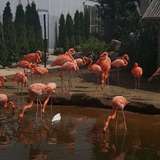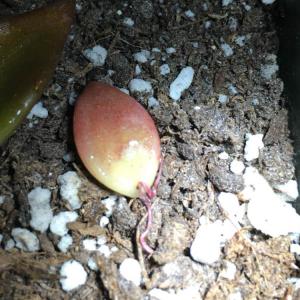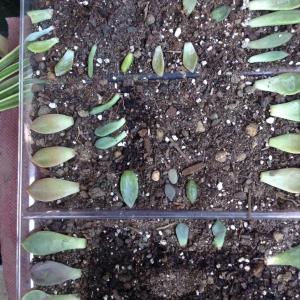成长记
rocky500
2017年11月13日

I now added "jade propagation" in my "garden"
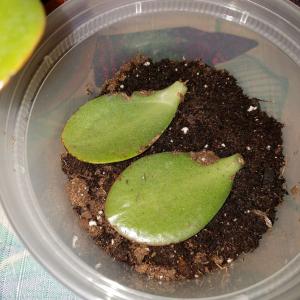

0
0
rocky500:my 1st time propegating Jade crossing my fingers 😉
Ueca
2017年11月10日

Some leaf propagation.
Species: Pachyphytum compactum, Pachyveria clavifolia, Anacampseros rufescens, and Sinocrassula indica.
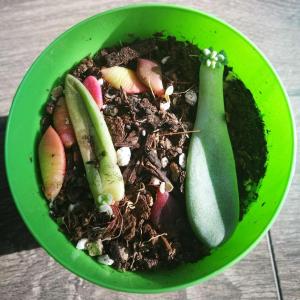
Species: Pachyphytum compactum, Pachyveria clavifolia, Anacampseros rufescens, and Sinocrassula indica.

1
0
文章
Miss Chen
2017年11月10日

Strawberries, unlike many other fruits, grow on plants close along the ground, and put out their own runners for propagation. In Arkansas, strawberry plantings are split into two seasons.

Fall Planting
Many commercial growers plant their strawberries in the fall, to allow the plants to take root and establish over the winter for early spring blooming. When planting in fall, it's important to cover the strawberries with organic or plastic mulch to protect them through the winter.
Spring Planting
Most home gardeners choose to plant strawberries in the spring instead, for a more natural growing season. Spring plantings in Arkansas take place mid-April, when the ground has thawed to 55 to 60 degrees Fahrenheit, and is welcoming to young strawberry plants.

Location and Planting
Strawberries require plots that receive full sunshine all day, every day, to take advantage of the lush Arkansas warmth. The plants cannot tolerate crowding or wet feet, so in swampy areas of Arkansas, it's important to raise the beds or mix natural soil with plenty of quick-draining soil and compost.

Fall Planting
Many commercial growers plant their strawberries in the fall, to allow the plants to take root and establish over the winter for early spring blooming. When planting in fall, it's important to cover the strawberries with organic or plastic mulch to protect them through the winter.
Spring Planting
Most home gardeners choose to plant strawberries in the spring instead, for a more natural growing season. Spring plantings in Arkansas take place mid-April, when the ground has thawed to 55 to 60 degrees Fahrenheit, and is welcoming to young strawberry plants.

Location and Planting
Strawberries require plots that receive full sunshine all day, every day, to take advantage of the lush Arkansas warmth. The plants cannot tolerate crowding or wet feet, so in swampy areas of Arkansas, it's important to raise the beds or mix natural soil with plenty of quick-draining soil and compost.
0
0
成长记
Brittany Paterson NJ
2017年10月30日

I now added "Kalanchoe Tomentosa (Panda Plant) propagation" in my "garden"
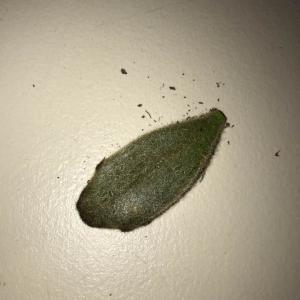

0
0
成长记
Brittany Paterson NJ
2017年10月29日

I now added "Echeveria Perle Von Nurnberg propagation" in my "garden"


0
1
Brittany Paterson NJ:@pzsoofi my sedum Adolphii props have really taken off and they look SOO big already. I just can’t wait to finally see some leaves on my perles!
pzsoofi:Mines are just sitting on top of some dry cactus mix on a plate, luckily at my mother’s house so I only get to see them 2-3 times a week. (Thinking about them 24/7 though...)
Brittany Paterson NJ:@pzsoofi how are you trying to propagate? I haven’t done any misting, and leave mine in indirect light. Tbh I have to try to ignore them because the whole process is so cool that if I don’t I get too antsy and impatient and then it seems like they take even longer.
pzsoofi:Thank you, that gives me hope, we’re only about 3 weeks in :D
Brittany Paterson NJ:@pzsoofi I’ve heard some people say that their Perles take the longest to root of all their echeverias. The leaf I was holding in my hand in the picture has been sitting on the prop tray for about 4 weeks. Now it’s taking off and has a few more though!
显示更多
成长记
Flora Wong
2017年10月29日

starting the propagation! it's the end of October but it's still 21-26℃ and sunny in Hong Kong so I hope it goes well.


0
0
文章
Miss Chen
2017年10月28日

Strawberry plants grow low to the ground and produce runners. They self-propagate through "daughter" plants. Self-propagation assures several years of continued growth, with three to five years of continued fruit production. Like all perennials, though, strawberry plants need specific fall and winter 
Preparation
Successful strawberry patches begin with the right planting area and soil for long-term success -- and also makes protecting the plants during the winter an easier task. Plant strawberries to receive full sunshine and quick drainage all year to keep them healthy in both summer and winter. Use a generous amount of organic compost at planting to maintain soil quality, and keep the soil from flooding or freezing in fall and winter.
Renovation
According to Purdue University, strawberry patches require yearly renovation in the fall to continue efficient growth and fruit production. Renovate your strawberry patch in late summer or fall, depending on the strawberry cultivar. Always start immediately after the last fruit harvest. This renovation eliminates old, finished plants and encourages new growth.
Process
Give the strawberries 12-12-12 fertilizer at a rate of 4 to 6 lbs. per 100 feet of row. Mix the fertilizer into the top 2 inches of soil to encourage new runner development. Mow all foliage down to within 1 inch of the soil, and pull up excess growth to narrow the rows to 6 to 8 inches. Cover the rows with 1/2 inch of soil and water as usual, to allow for new growth.

Winter Protection
Mulching and winter protection must follow renovation, to protect strawberries through the cold season. When new plants emerge from your renovated soil, water and weed them as usual until two to three weeks before the first frost of the season. At that time, give the new plants 12-12-12 fertilizer per manufacturer directions, then spread 4 to 5 inches of organic mulch, straw or shredded paper over the path. Maintain this layer through winter and turn it into the soil in spring.

Preparation
Successful strawberry patches begin with the right planting area and soil for long-term success -- and also makes protecting the plants during the winter an easier task. Plant strawberries to receive full sunshine and quick drainage all year to keep them healthy in both summer and winter. Use a generous amount of organic compost at planting to maintain soil quality, and keep the soil from flooding or freezing in fall and winter.
Renovation
According to Purdue University, strawberry patches require yearly renovation in the fall to continue efficient growth and fruit production. Renovate your strawberry patch in late summer or fall, depending on the strawberry cultivar. Always start immediately after the last fruit harvest. This renovation eliminates old, finished plants and encourages new growth.
Process
Give the strawberries 12-12-12 fertilizer at a rate of 4 to 6 lbs. per 100 feet of row. Mix the fertilizer into the top 2 inches of soil to encourage new runner development. Mow all foliage down to within 1 inch of the soil, and pull up excess growth to narrow the rows to 6 to 8 inches. Cover the rows with 1/2 inch of soil and water as usual, to allow for new growth.

Winter Protection
Mulching and winter protection must follow renovation, to protect strawberries through the cold season. When new plants emerge from your renovated soil, water and weed them as usual until two to three weeks before the first frost of the season. At that time, give the new plants 12-12-12 fertilizer per manufacturer directions, then spread 4 to 5 inches of organic mulch, straw or shredded paper over the path. Maintain this layer through winter and turn it into the soil in spring.
0
0
成长记
cclecombe
2017年10月22日

I'm thinking about taking some more clippings before winter hits. Is that a good time to propagate? #Propagation


0
0


